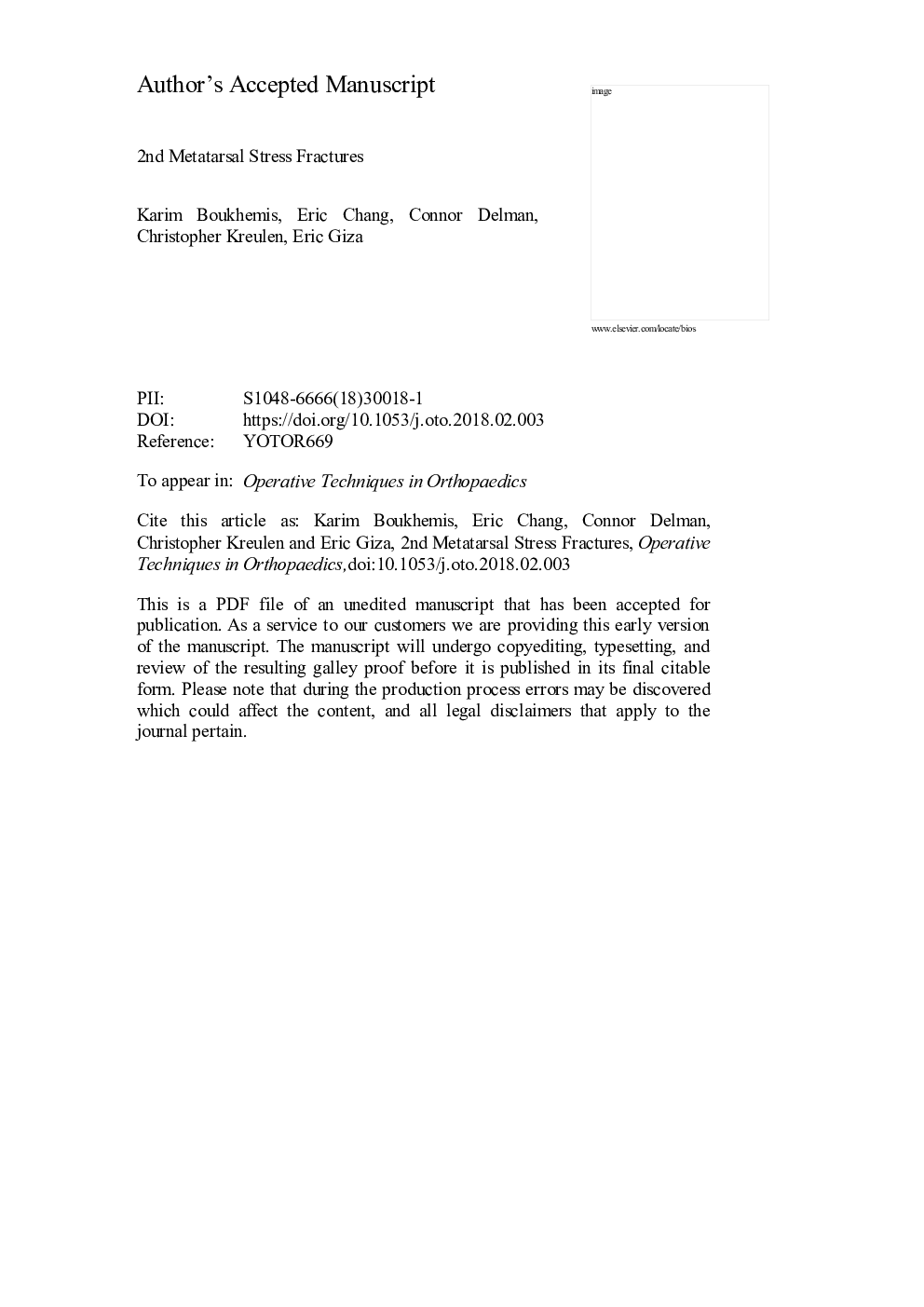| Article ID | Journal | Published Year | Pages | File Type |
|---|---|---|---|---|
| 8801777 | Operative Techniques in Orthopaedics | 2018 | 16 Pages |
Abstract
Metatarsal fractures are a common occurrence for the orthopedic surgeon. Some of these injuries are secondary to trauma or acute events. Other times, these fractures are a chronic issue for patients. It becomes a chronic issue when it is an overuse type of injury that leads to a stress fracture. In this chapter you will be able to identify the risks associated with second/third metatarsal stress fractures and treat them appropriately. Diagnosing these injuries in the clinical setting can sometimes be difficult given their vague symptoms. Rarely do these injuries require operative fixation and this will be further explained within the chapter. Occasionally vitamin supplementation is adequate to push these injuries into healing. With the advent of more laboratory tests, diagnosing osteoporosis or osteopenia has become a standard work up to direct treatment. The bigger issue is usually determining why these injuries occurred in the first place, which is the more challenging aspect. The metabolic concerns will be described in depth and alternative methods to healing these fractures will also be discussed. New modalities have been developed over the years and they have led to improved healing potentials in these types of fractures. Clinical cases will show the patho-anatomy of these injuries and their typical course for recovery, both physically and radiographically.
Related Topics
Health Sciences
Medicine and Dentistry
Orthopedics, Sports Medicine and Rehabilitation
Authors
Karim MD, Eric MS2, Connor PGY2, Christopher MD, MS, Eric MD,
